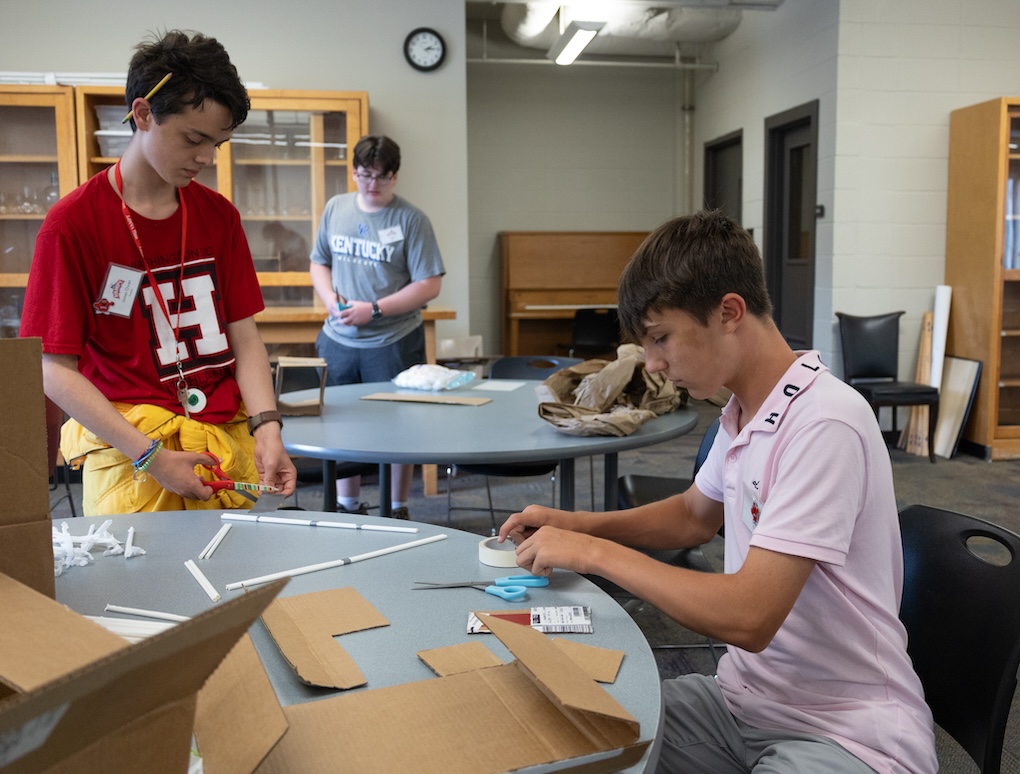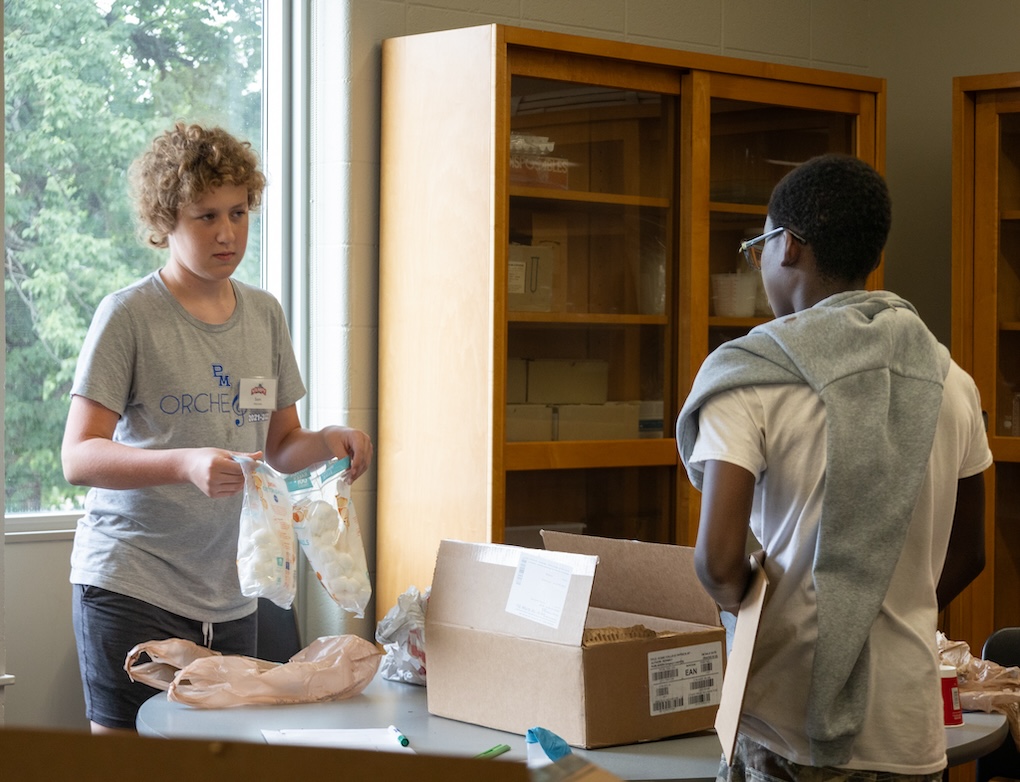On Wednesday afternoon, the physics class had two classic physics lessons. One of them was about planetary orbits. Kepler’s Laws could perfectly model planetary orbits, but no one could explain why they worked – until Isaac Newton. Combining what they had just learned before about gravity and circular motion, they re-created some of Isaac Newton’s work and made a formula connecting a planet’s distance from the sun with how fast it orbits. After a pretty challenging math problem, they calculated the mass of the sun – all with things you could measure on Earth!
After that, they had an engineering challenge: the classic “egg drop” problem. With some supplies scavenged from the dorms and the physics lab, they made carboard contraptions to cradle an egg and help it survive a fall off a bridge on campus. In the backs of their minds, they were thinking about last week’s lessons on momentum and impulse: the longer the collision takes, the gentler it is, so you want to pad out the collision to take as long as possible. They already had lessons from Mr. Lee about how these principles are applied in cars to make crashes safer, so now they had to engineer “safety features” themselves. Some campers did this with soft packaging, like cotton balls, and others tried shock absorbers, like straws taped together that were strategically designed to break on impact (like the “crumple zone” of a car).
The egg drop wasn’t nearly as successful as they hoped it would be, but it was still a good learning experience. Only one egg (in a huge nest of cotton balls) survived. When the shock absorber design dropped, it tipped over as it fell and crashed on its side, so the shock absorbers never got a chance to work. The camper who tried that was already thinking about how his center of mass wasn’t stable enough and how that made it tip over – the earlier physics lessons were giving him inspiration to improve on his model.


